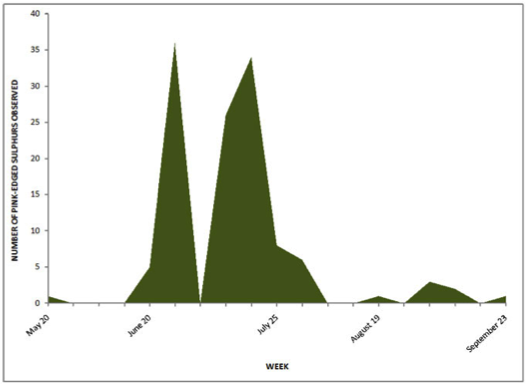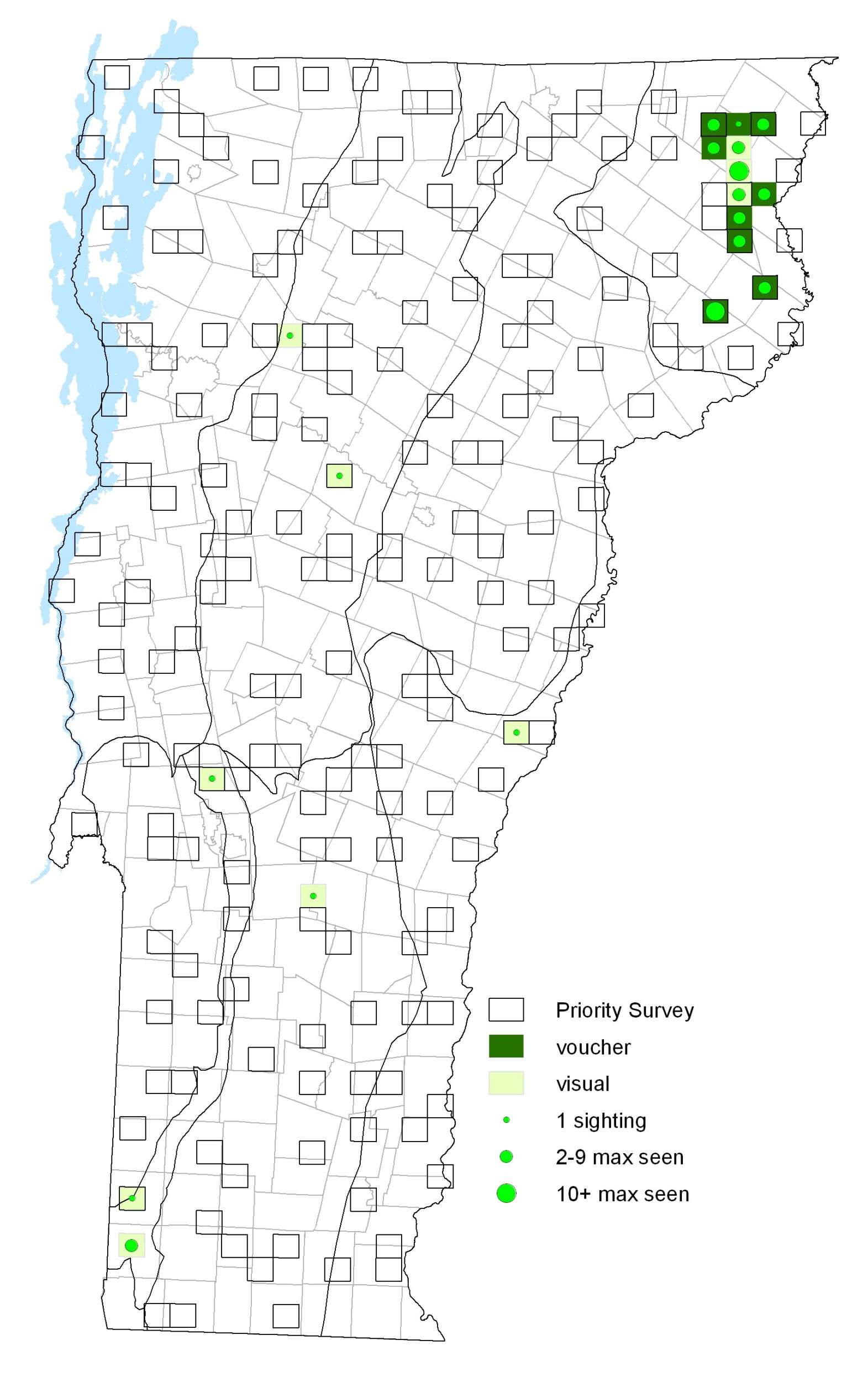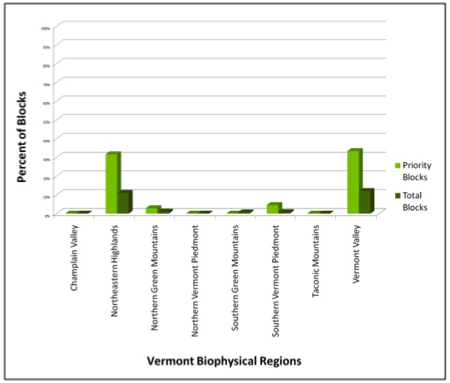Preferring northern heathlands, its distribution essentially coincides with the Canadian Zone or Northern Coniferous Forest biome. Some authorities consider western populations as distinct species. In the Northeast it becomes common only in the boreal regions of northern New York and New England.
Identification
Difficult, but not impossible to distinguish from Clouded and Orange Sulphurs. Both sexes with conspicuous pink wing edges. Fresh Clouded Sulphurs can have more faint pink fringes. Male yellow; female yellow or white (very rarely). Upperside of male with black border; border on female may be incomplete or only seen at tip of wing. Underside of hindwing clear yellow with single silver cell spot circle in pink. Much weaker flier than other sulphurs.
Conservation Status
Resident – uncommon
Vermont S3
Global G5
Flight 
The Pink-edged Sulphur has one extended brood from mid-June through September, but is most commonly seen from late June to late July. Extreme dates: 20 June 1998 in Ferdinand (S. Griggs), 20 June 2002 in Bennington (K. Hemeon), and 23 September 2002 in Shaftsbury (T. Armata).
Distribution and Habitat
North American Range- From British Columbia and eastern Oregon east through the Great Lakes area to northern New England. Isolated population in central Appalachians of northeast Pennsylvania, western Maryland, eastern West Virginia, and northwest Virginia.
A boreal zone, northern butterfly, found mainly in the Northeastern Highlands of Vermont. Recorded from a number of blueberry (Vaccinium) species. In New England it appears to prefer Velvetleaf Blueberry (V. myrtilloides), but it has also been reported to eat Dwarf Bilberry (V. cespitosum), and two species of lowbush blueberries (V. angustifolium and V. vacillans). Adults nectar from Bristly Sarsaparilla (Aralia hispida) and Orange Hawkweed (Hieracium aurantiacum).








